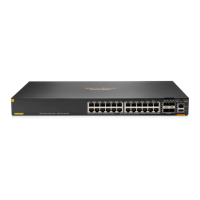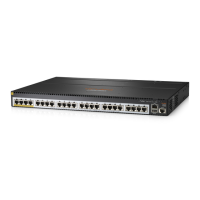4
Keys Function
before pressing
Ente
are saved in the edit buffer.
Backspace
Deletes the character to the left of the cursor and moves the cursor back
one character.
Left arrow key (←) Moves the cursor one character to the left.
Right arrow key (→) Moves the cursor one character to the right.
Up arrow key (↑) Gets the previous history command.
Down arrow key (↓) Gets the next history command.
Tab
If you press
Tab
after entering part of a keyword, the system automatically
completes the keyword:
• If a unique match is found, the system displays the complete keyword.
• If there is more than one match, press Tab multiple times to pick the
keyword you want to enter.
• If there is no match, the system does not modify what you entered but
displays it again in the next line.
Entering a text or string type value for an argument
A text type argument value can contain printable characters except a question mark (?).
A string type argument value can contain any printable characters except for the following characters:
• Question mark (?).
• Quotation mark (").
• Backward slash (\).
• Space.
A specific argument might have more requirements. For more information, see the relevant
command reference.
To enter a printable character, you can enter the character or its ASCII code in the range of 32 to 126.
Abbreviating commands
You can enter a command line quickly by entering incomplete keywords that uniquely identify the
complete command. In user view, for example, commands starting with an s include startup
saved-configuration and system-view. To enter the command system-view, you only need to
type sy. To enter the command startup saved-configuration, type st s.
You can also press Tab to complete an incomplete keyword.
Configuring and using command keyword aliases
The command keyword alias feature allows you to use your own keywords to replace the following
keywords when you execute a command:
• The first keywords of non-undo commands.
• The second keywords of undo commands.
For example, if you configure the alias show for the display keyword, you can enter either show
clock or display clock to execute the display clock command.

